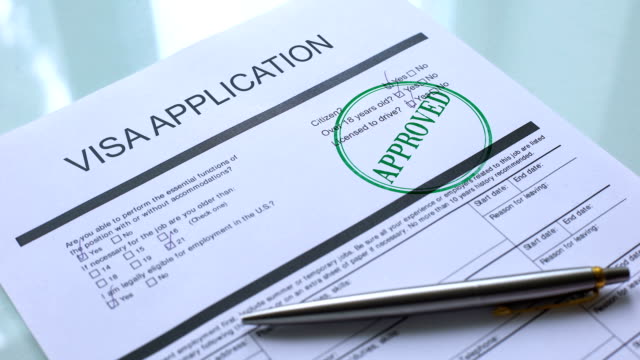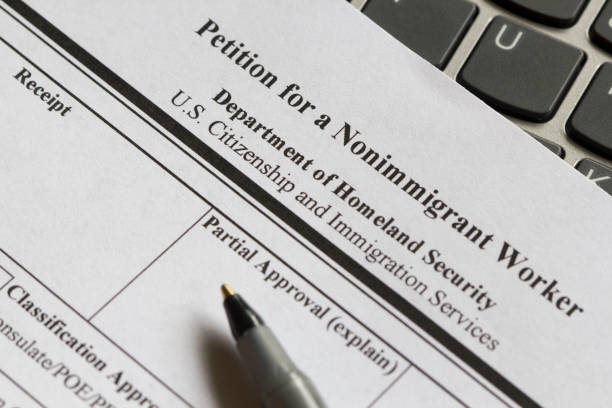Immigration
Immigrating to the U.S. Without a Job Offer: A Complete Guide
By
Immigrating to the United States is a dream for many individuals worldwide, promising personal and professional growth opportunities.
However, for those immigrating to the U.S. without a job offer, the path to U.S. residency may seem complex and challenging.
Fortunately, various avenues are available to navigate this journey, each with its own requirements and opportunities.
Some U.S. employment-based visa categories, such as EB-1, EB-2, and EB-5, do not require a specific job offer. If you meet the eligibility criteria, you can apply for a visa, immigrating to the U.S. without a job offer.
Keep reading as we discuss everything you need to know about immigrating to the U.S. without a job offer!

U.S. Immigrant Visas
For individuals set on immigrating to the U.S. without a job offer, immigrant visas offer a pathway to achieving their long-term immigration goals.
Non-immigrant visas are not a direct option to permanent residency in the United States and should not be considered valid for immigrating to the United States without a job offer.
U.S. Immigrant visas typically require sponsorship from a family member, employer, or through investment in the U.S. economy.
Here are the main immigrant visa categories, some of which allow you to move to the United States without a job offer.
1. Family-Based Immigration
Green card holders who are lawful permanent residents and United States citizens can sponsor selected family members for immigrant visas, providing an option for immigrating to the United States without a job offer.
Most importantly, not every family relationship satisfies the sponsorship requirements. U.S. citizens can sponsor their spouse, children, parents, brothers, and sisters.
It is also important to note that United States citizens wishing to sponsor their parents must be at least 21 years old. Lawful Permanent Residents (LPR) can sponsor their spouse or unmarried children.
This means that grandparents, aunts, uncles, or cousins cannot sponsor you for a visa in any situation, and LPR siblings or children cannot sponsor you for a visa either.
2. Diversity Visa Lottery
Immigrating to the U.S. without a job offer is a possibility for winners of the Diversity Visa Lottery.
The Diversity Visa Lottery Program (DV Lottery) is an annual lottery program that provides immigrant visas to individuals from countries with historically low immigration rates to the United States.
Those selected for the opportunity of immigrating to the U.S. without a job offer through the diversity visa lottery are chosen at random by a computerized system.
They are also restricted to a country receiving at most 7% of the Diversity Visas. So, if you win the diversity visa lottery, you and your family must meet the same rules as anyone else applying for a green card in the U.S.
You might not qualify for a green card if you have certain criminal records. Some medical problems could also make getting one difficult or even impossible.
However, by remaining eligible for the green card and winning the diversity visa lottery, immigrating to the U.S. without a job offer is possible.
3. Refugee And Asylum Immigration
Immigrating to the United States without a job offer is possible for those who have been granted refugee status or asylum in the U.S. They are eligible to apply for an immigrant visa allowing lawful permanent residency in the U.S.

Special Immigrant Visas
Additionally, there are specific special immigrant visas for particular groups immigrating to the United States without a job offer:
1. EB-1A Visa
This route into the U.S. is for immigrants who excel in their field. That could be in science, athletics, art, business, or multinational managers.
For those who can show extraordinary ability at what they do and provide evidence of their claims, there will be no requirement for a job offer.
To be eligible for the visa, applicants must prove their exceptional abilities using awards, published material, or an extensive portfolio of business projects.
These visas are relatively easy to obtain, and we highly recommend that you seek the advice of a professional before applying.
2. EB-5 Immigrant Investor Visa
The EB-5 range of visas is classed as immigration by investment visas. The applicant must commit financially to projects in the U.S.
Upon the project’s success and meeting the requirements, the applicant is free to apply for the coveted green card. There are two types of EB-5 visas: the direct investment and the Regional Center program.
With the direct investment option, you play a crucial role in developing the project you are investing in. In contrast, your investment will be made into an existing project through a Regional Center.
These two types of U.S. work visas do not require you to have received a job offer before your application. Nevertheless, it takes work to get them because the EB-1 visa is very selective.
To receive it, you need to be able to prove that your abilities and experience are exceptional. With the EB-5 Visa, you will create job opportunities, so you do not need to have a job offer yourself.
However, getting this visa requires a significant financial investment. If you meet the EB-1 or EB-5 visa criteria, you can work in the U.S. permanently.
Non-Immigrant Visa Categories

Non-immigrant visas are temporary permits for individuals to enter the United States for specific purposes, such as tourism, education, or business activities.
These individuals must intend to return to their home country at the end of the visa. While these visas do not directly lead to permanent residency, they can provide valuable opportunities to explore and establish connections in the U.S.
If none of the above visa categories work for your situation, here are some common non-immigrant visa categories that could open doors to immigrating to the U.S. without a job offer in the future:
1. B-1/B-2 Visitor Visas
The B-1 visa is for individuals travelling to the U.S. for business purposes, such as attending meetings, conferences, or negotiating contracts. On the other hand, the B-2 visa is for tourists visiting the U.S. for leisure or medical treatment.
While these visas do not permit employment, they offer a chance to experience life in the U.S. and potentially lay the groundwork for future opportunities.
2. F-1 Student Visa
The F-1 visa is designed for individuals pursuing academic studies at accredited educational institutions in the United States. Under this visa, students can enroll in degree programs, language training programs, or vocational courses.
Upon graduation, F-1 visa holders may be eligible for Optional Practical Training (O.P.T.), allowing them to gain work experience in their field of study for up to 12 months (or 36 months for S.T.E.M. degree holders).
3. J-1 Exchange Visitor Visa
The J-1 visa facilitates cultural exchange and international cooperation by allowing individuals to participate in educational and cultural exchange programs in the U.S.
These programs may include research scholar programs, professorship, internships, or au pair programs. Some J-1 programs may offer opportunities for employment or practical training.
However, the primary purpose is to promote mutual understanding between the U.S. and other countries.
Conclusion
Immigrating to the United States without a job offer requires careful consideration of available options and strategic planning.
We recommend that you consult with an immigration lawyer or visit the official website of the U.S. Department of State for detailed and updated information regarding immigrant visas and the application process.
Frequently Asked Questions
1. What are the steps for immigrating to the U.S. through a family member’s sponsorship?
To immigrate to the U.S. through family sponsorship, follow these steps:
- File Form I-130 to establish the qualifying relationship with your U.S. citizen or permanent resident relative (sponsor).
- Once the U.S.C.I.S. approves the I-130, it goes to the National Visa Center (NVC).
- The NVC requested documents from both sponsors and intended immigrants.
- The sponsor submits an affidavit of support (Form I-864) to prove financial support.
- The intending immigrant completes Form DS-260 and pays fees.
- Attend a visa interview at your home country’s U.S. embassy or consulate.
- Undergo a medical exam and security checks.
- If approved, enter the U.S. as a permanent resident and receive a green card.
The exact process may vary based on the relationship and the sponsor’s status (citizen or permanent resident).
2. Can you apply for a work visa in the U.S. without a job offer?
In most cases, you cannot. To apply for a work visa in the U.S., you must secure a job offer, which is a crucial step.
If you don’t secure a specific job offer (and therefore, an employer will sponsor you), the only option for a work-based visa is to apply for one that allows for a self-petition.
Where self-petition visas are concerned, you are filling out the form and providing all the information about yourself. However, this is a much more complicated route to obtaining a work visa.






